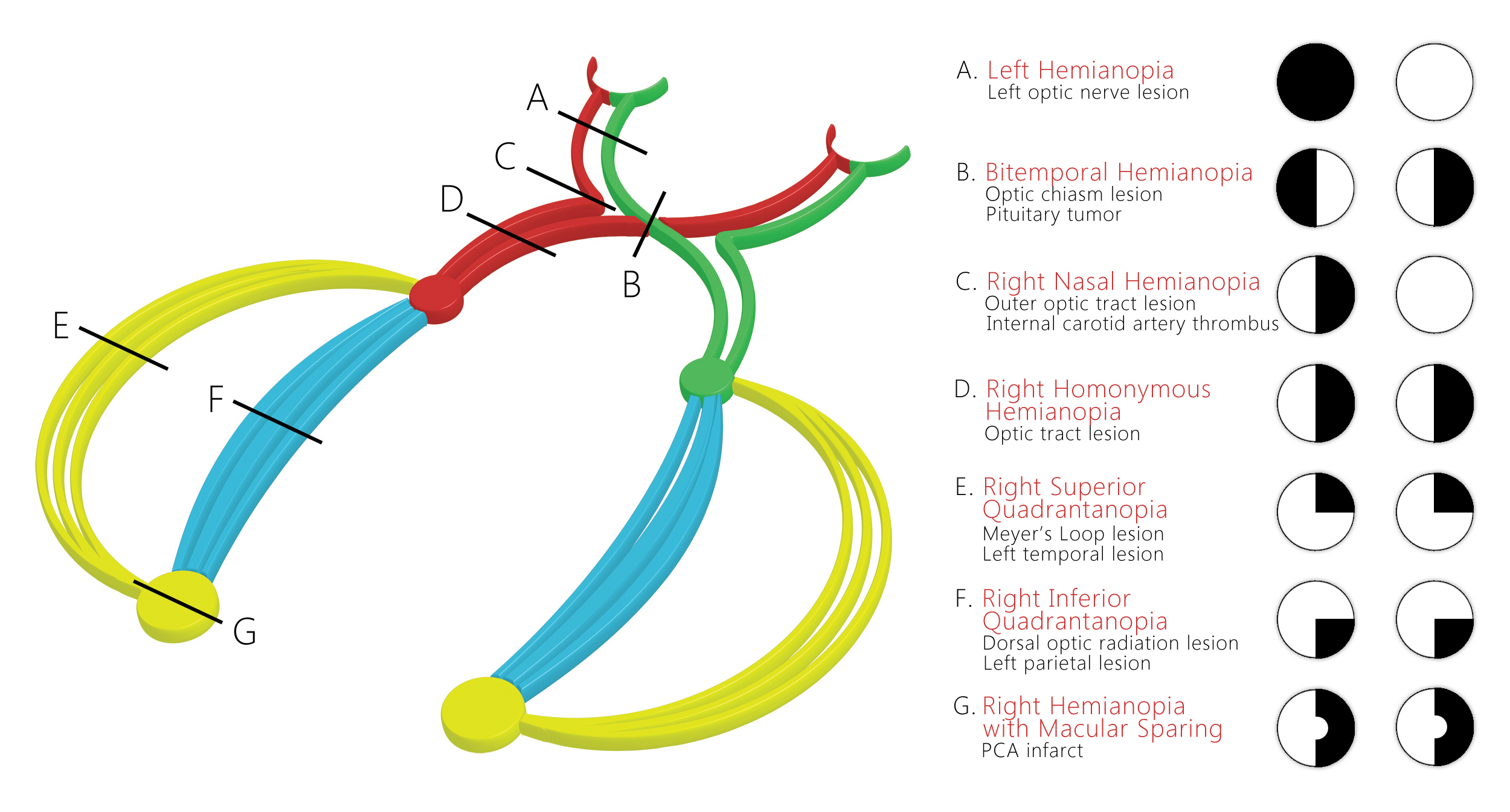WBR0584
| Author | [[PageAuthor::Serge Korjian M.D. (Reviewed by Serge Korjian)]] |
|---|---|
| Exam Type | ExamType::USMLE Step 1 |
| Main Category | MainCategory::Pathophysiology |
| Sub Category | SubCategory::Head and Neck, SubCategory::Neurology |
| Prompt | [[Prompt::A 32-year-old woman presents to the gynecology clinic for 3 months of absent menstruation. The patient has been trying to get pregnant for the past year but has been unsuccessful. She reports decreased libido and episodes of bilateral milky breast discharge. She also explains that she has been having difficulty driving and has failed a road test twice. Which of the following visual field patterns is most likely present in this patient?]] |
| Answer A | [[AnswerA:: ]] ]]
|
| Answer A Explanation | AnswerAExp::Homonymous hemianopia involves loss of vision on one side. It usually occurs due to a lesion to the optic tracts or a PCA stroke although the latter usually has associated macular sparing. This lesion is not seen with prolactinomas. |
| Answer B | [[AnswerB:: ]] ]]
|
| Answer B Explanation | [[AnswerBExp::Right upper quadrantanopia is characterized by loss of vision in the right upper quadrant of the visual field. It usually occurs with left temporal lesions due to the interruption of the left Meyer's loop. Prolactinomas do not affect the temporal lobe.]] |
| Answer C | [[AnswerC:: ]] ]]
|
| Answer C Explanation | AnswerCExp::Left nasal hemianopia usually occurs with lesions of the internal carotid artery (internal carotid thrombosis) that occur lateral to the optic chiasm. This presentation is not typical of prolactinomas. |
| Answer D | [[AnswerD:: ]] ]]
|
| Answer D Explanation | AnswerDExp::This lesion portrays bitemporal hemianopia seen in large prolactinomas that abut the optic chiasm. |
| Answer E | [[AnswerE:: ]] ]]
|
| Answer E Explanation | [[AnswerEExp::Right lower quadrantanopia is characterized by loss of vision in the right lower quadrant of the visual field. It usually occurs with left parietal lesions due to the interruption of the left dorsal optic radiations. Prolactinomas do not usually affect the parietal lobe.]] |
| Right Answer | RightAnswer::D |
| Explanation | [[Explanation::
|
| Approved | Approved::Yes |
| Keyword | WBRKeyword::Bitemporal hemianopia, WBRKeyword::Prolactinoma, WBRKeyword::Visual field defects, WBRKeyword::Optic chiasm |
| Linked Question | Linked:: |
| Order in Linked Questions | LinkedOrder:: |